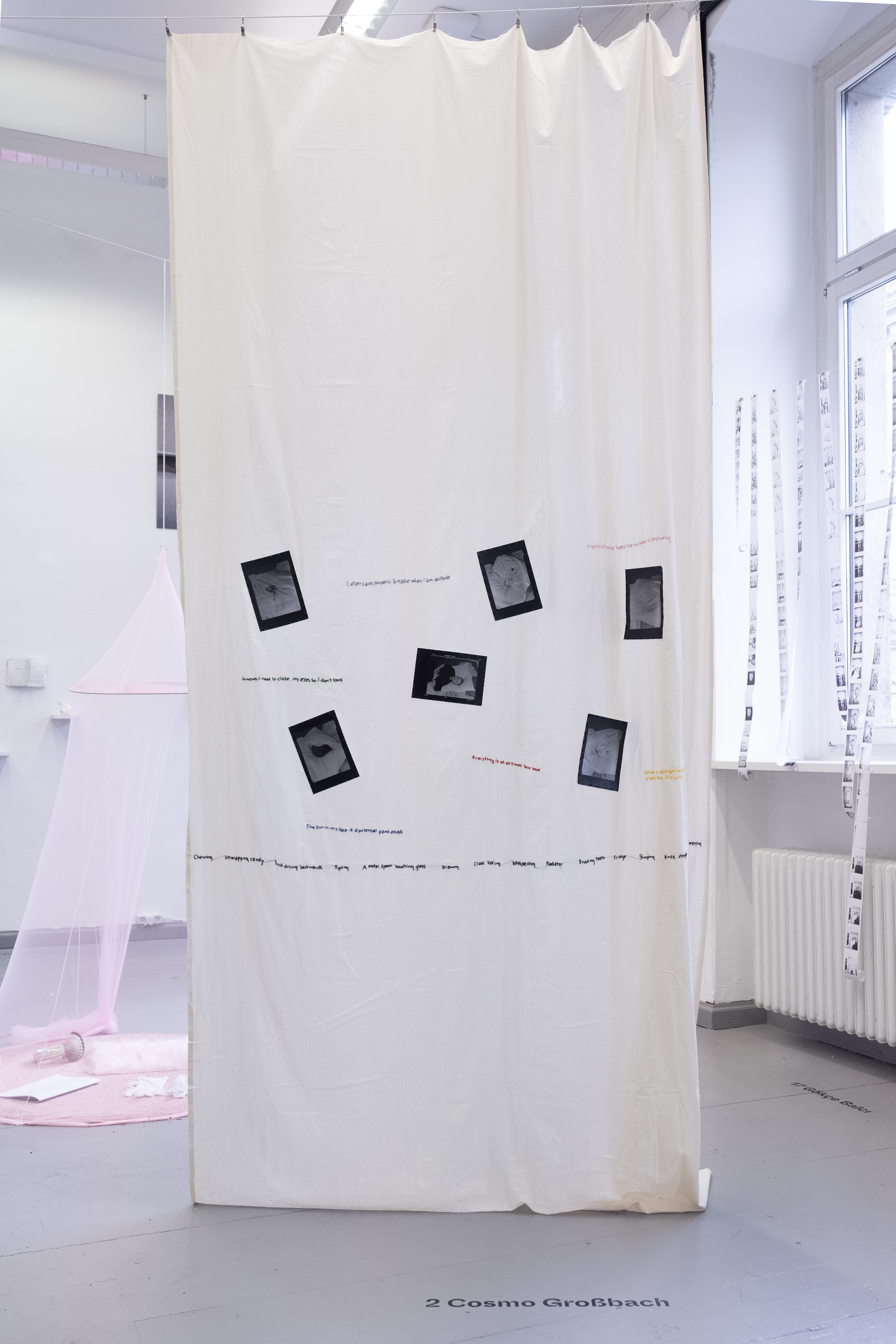





empty lungs 2025
The work empty lungs offers a glimpse into my daily struggle to leave my room. The title refers to my feeling of being unable to breathe while being outside.
Silver gelatine prints of objects I need to carry with me at all times – earplugs, water, sunglasses, and a cap – and a self-portrait are sewn onto a textile. These objects are necessary to avoid sensory overload or, when avoidance isn’t possible, calm me down. Embroidered sentences on the textile provide insight into my mental state during episodes of sensory overload and words which are causing sensory overload create a frame within the textile.
The textile combines sewn photographs, embroidered texts, and a self-portrait, creating a layered representation of my daily reality. The tactile quality of the fabric invites viewers to engage with the work on a sensory level.
It was very important to me to have a layer of softness within the work to show a need for softness amid an otherwise harsh sensory environment. Embroidery, often associated to be a feminine task, subtly hints at gender stereotypes, adds another layer to my work as a transman.
Sensory overload is a symptom experienced by many people with autism. Taste, touch, smell, sound and light can all be triggers. The result of an overload can be intense fear, wanting to flee, aggression and difficulty communicating. The aftermath is often extreme fatigue, discomfort and restlessness.
The work empty lungs offers a glimpse into my daily struggle to leave my room. The title refers to my feeling of being unable to breathe while being outside.
Silver gelatine prints of objects I need to carry with me at all times – earplugs, water, sunglasses, and a cap – and a self-portrait are sewn onto a textile. These objects are necessary to avoid sensory overload or, when avoidance isn’t possible, calm me down. Embroidered sentences on the textile provide insight into my mental state during episodes of sensory overload and words which are causing sensory overload create a frame within the textile.
The textile combines sewn photographs, embroidered texts, and a self-portrait, creating a layered representation of my daily reality. The tactile quality of the fabric invites viewers to engage with the work on a sensory level.
It was very important to me to have a layer of softness within the work to show a need for softness amid an otherwise harsh sensory environment. Embroidery, often associated to be a feminine task, subtly hints at gender stereotypes, adds another layer to my work as a transman.
Sensory overload is a symptom experienced by many people with autism. Taste, touch, smell, sound and light can all be triggers. The result of an overload can be intense fear, wanting to flee, aggression and difficulty communicating. The aftermath is often extreme fatigue, discomfort and restlessness.